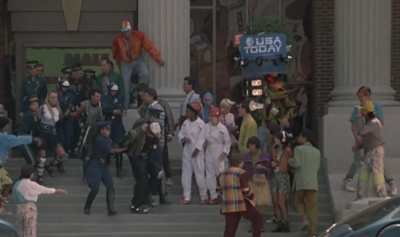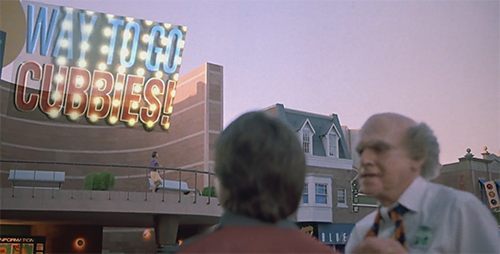Sometime this evening, after we haven’t rehydrated a pizza for dinner, all of the events portrayed in Back To The Future will have happened in the past. This is it. This is the day all your dreams die.
So, what’s so special about the technology in Back To The Future that we don’t have now? Hoverboards, obviously, but a lot of people have been doing their part to make sure we have something like a hoverboard on this important day. Last week, the record for the longest hoverboard flight was broken by a Canadian company making large multirotor platforms. While it’s called a hoverboard, it’s really not in the spirit of the device that would recreate the skateboard chase scene in front of Hill Valley’s courthouse. For that, you’ll need something that doesn’t use propellers, at least.
There’s a better way to construct a hoverboard than by strapping a few blenders to your feet. Last summer, Lexus built one with superconducting materials and magnets. Yes, it’s effectively the same demonstration you’ve always seen with superconducting materials, only this time it’s dressed up with pro skaters. There are tens of thousands of dollars worth of magnets in the Lexus hoverboard, making this entirely impractical for anyone who wants to build their own.
 There is another option if you want a hoverboard. This day, last year, Hendo Hoverboards launched a Kickstarter with the best media blitz we’ve ever seen. They built a hoverboard that is basically a quadcopter, but instead of propellers, they use magnets. These magnets produce eddy currents in the metallic, non-ferrous ‘hover surface’. The grand prize for this Kickstarter? Today, October 21, 2015, you’ll be invited to a VIP event where you will not only get to ride a hoverboard, you’ll get one to take home. Price: $10,000.
There is another option if you want a hoverboard. This day, last year, Hendo Hoverboards launched a Kickstarter with the best media blitz we’ve ever seen. They built a hoverboard that is basically a quadcopter, but instead of propellers, they use magnets. These magnets produce eddy currents in the metallic, non-ferrous ‘hover surface’. The grand prize for this Kickstarter? Today, October 21, 2015, you’ll be invited to a VIP event where you will not only get to ride a hoverboard, you’ll get one to take home. Price: $10,000.

This company isn’t in the market of building hoverboards; they have a much, much more grandiose idea: the founder wants to use hoverboards as a stepping stone to an active earthquake mitigation strategy for buildings. Yes, buildings can hover inches above their foundation, just in case an earthquake strikes. You say the power might go out during an earthquake, causing the building to fall inches to the ground? I never said it was a good idea.
Lucky for us, the Hendo hoverboard did prove to be a proof of concept that a ‘spinning magnet’ hoverboard is capable of supporting the weight of a rider. We know a few people have been working on this technology before the Hendo hoverboard was announced, and replicating the Hendo hoverboard build shouldn’t cost more than about $1000 USD. We’re eventually going to have to do this, and we’re going to replicate the Pitbull hoverboard, bojo, because we want powah.
So, what else of Back to the Future Part II hasn’t become a reality? News drones. People don’t read newspapers anymore. Self-driving cars are more realistic than hovercar conversions. Pepsi Perfect exists, but only at a Comic Con. Nike Air Mags exist, but not with power laces. The world of Hill Valley still has fax machines, and I really want to rehydrate a pizza.
 It’s alright, most of the technology of Back to the Future was just a joke; ‘Queen Diana’ would have never happened, and what exactly was the point of Gray’s Sports Almanac if you can look everything up on the Internet?
It’s alright, most of the technology of Back to the Future was just a joke; ‘Queen Diana’ would have never happened, and what exactly was the point of Gray’s Sports Almanac if you can look everything up on the Internet?
There was one possibly accurate prediction in Back to the Future: The Chicago Cubs may win the 2015 World Series. Let me repeat that, for effect. The most accurate prediction of the future given to us in Back to the Future was that the Chicago Cubs win the World Series. That’s how inaccurate Back To The Future was.










